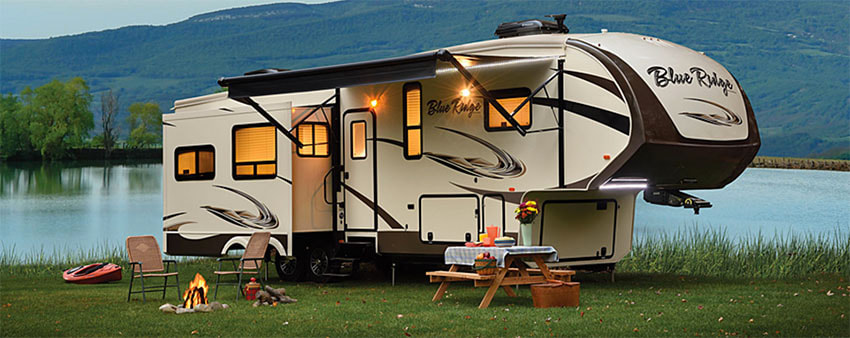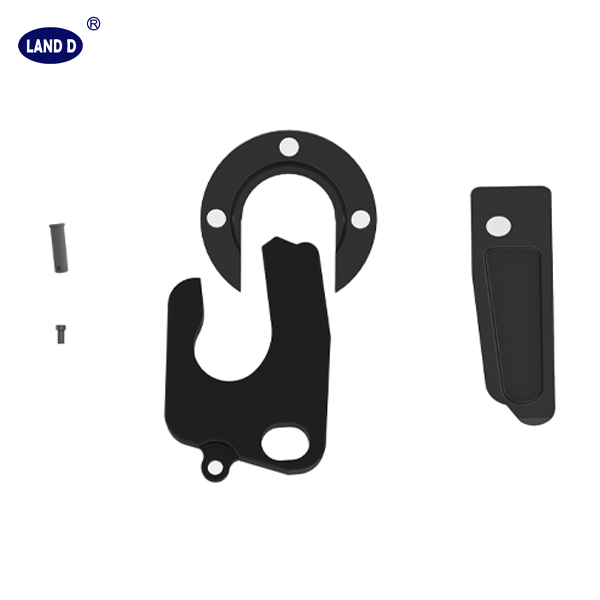25 de abril de 2024, 14:42 volver a la lista
Fifth Wheel Safety and Maintenance Fifth Wheel

Seguridad y mantenimiento de la quinta rueda
Si eres camionero, operador de maquinaria pesada o simplemente te encanta acampar, es probable que estés familiarizado con las configuraciones de quinta rueda. Estas configuraciones, en las que el remolque se engancha al tractor o semirremolque mediante un pivote central fijado en el centro de un disco u otro mecanismo, son muy comunes y se pueden ver por todas partes.
There are many different kinds of fifth-wheel connectors. Aside from the common vertical pin type that you’ll likely see on semis and tractor-trailers, there are also pintle hitches, which use a hook and a ring to allow greater flexibility on rough terrain; gooseneck hitches, which are used in pickup truck beds to pull campers and horse trailers; ball hitches, which usually attach to the back end of a truck for a variety of towing needs, and low-mount car-haulers – kind of like miniature flatbeds. With so much variation in style and capability, it’s easy for some telltale signs of danger or incorrect weight distribution to go unnoticed. And that means bad news!
There are many different kinds of fifth-wheel connectors. Aside from the common vertical pin type that you’ll likely see on semis and tractor-trailers, there are also pintle hitches, which use a hook and a ring to allow greater flexibility on rough terrain; gooseneck hitches, which are used in pickup truck beds to pull campers and horse trailers; ball hitches, which usually attach to the back end of a truck for a variety of towing needs, and low-mount car-haulers – kind of like miniature flatbeds. With so much variation in style and capability, it’s easy for some telltale signs of danger or incorrect weight distribution to go unnoticed. And that means bad news!
It’s fairly obvious what will happen if your fifth-wheel detaches while you’re driving, and it is improperly attached or maintained – the trailer will drop, with no way to stop or steer it! If it’s heavy and you’re going highway speeds, that can spell catastrophic danger for anyone around, and virtually guarantees a trailer that will soon be smashed into scrap metal. This is a headache that you absolutely want to avoid, for many more reasons than we could list here.
Conviene familiarizarse con los diferentes estilos de conectores y sus ventajas y desventajas en cuanto a la distribución del peso, la capacidad en diferentes terrenos, etc. Asegúrese también de familiarizarse con su manejo antes de emprender un viaje largo. Pero, sin duda, lo más importante es simplemente mantenerse al día con el mantenimiento y asegurarse de que no haya problemas subyacentes que puedan provocar una avería.
Always use your senses and do a visual inspection of the connection point, brake lines, safety chains, and other vital places around the truck and trailer, but remember – just because it looks good, doesn’t mean it is! Listen as you drive for anything that sounds out of place: do you hear binding or snapping sounds, especially around corners? That’s inertia and momentum, throwing weight out of place and putting too much stress in certain areas. Are you finding it difficult to disengage the pin when releasing the quinta rueda? You could be lacking grease, or have misaligned parts. Signs like heavy pitting on the top plate or a wrongly set adjustment rod (on some styles) can indicate big problems further in. And as we’re a fan of saying – use preventative maintenance now, to save time, money and stress later!
Conviene familiarizarse con los diferentes estilos de conectores y sus ventajas y desventajas en cuanto a la distribución del peso, la capacidad en diferentes terrenos, etc. Asegúrese también de familiarizarse con su manejo antes de emprender un viaje largo. Pero, sin duda, lo más importante es simplemente mantenerse al día con el mantenimiento y asegurarse de que no haya problemas subyacentes que puedan provocar una avería.
Always use your senses and do a visual inspection of the connection point, brake lines, safety chains, and other vital places around the truck and trailer, but remember – just because it looks good, doesn’t mean it is! Listen as you drive for anything that sounds out of place: do you hear binding or snapping sounds, especially around corners? That’s inertia and momentum, throwing weight out of place and putting too much stress in certain areas. Are you finding it difficult to disengage the pin when releasing the quinta rueda? You could be lacking grease, or have misaligned parts. Signs like heavy pitting on the top plate or a wrongly set adjustment rod (on some styles) can indicate big problems further in. And as we’re a fan of saying – use preventative maintenance now, to save time, money and stress later!
Oftentimes, fifth-wheel systems can be rebuilt or repaired for a fraction of the cost of replacing the entire thing. But it all depends on how early you catch any issues, and how well you’ve taken care of your equipment over the many miles along the road. You don’t want to be stranded on the roadside, at best, or – at worst – cause a major accident that could have lethal consequences for you or someone else.
If you want to be sure that your trailer is working at its best, bring it to landfifthwheel for an inspection – or let us come to you with one of our fully equipped service trucks. We may not find anything major, and in fact, we hope we don’t, but when it comes to safety, there’s no substitute for doing it right!
Últimas noticias
-
Truck Trailer Components and Solutions
NoticiasAug.11,2025
-
JSK 37C and Fifth Wheel Solutions
NoticiasAug.11,2025
-
Holland 5th Wheel Slider Solutions
NoticiasAug.11,2025
-
Heavy Duty Fifth Wheel Hitch Solutions
NoticiasAug.11,2025
-
Fifth Wheels and Jost Solutions
NoticiasAug.11,2025
-
5th Wheel Solutions and Accessories
NoticiasAug.11,2025

